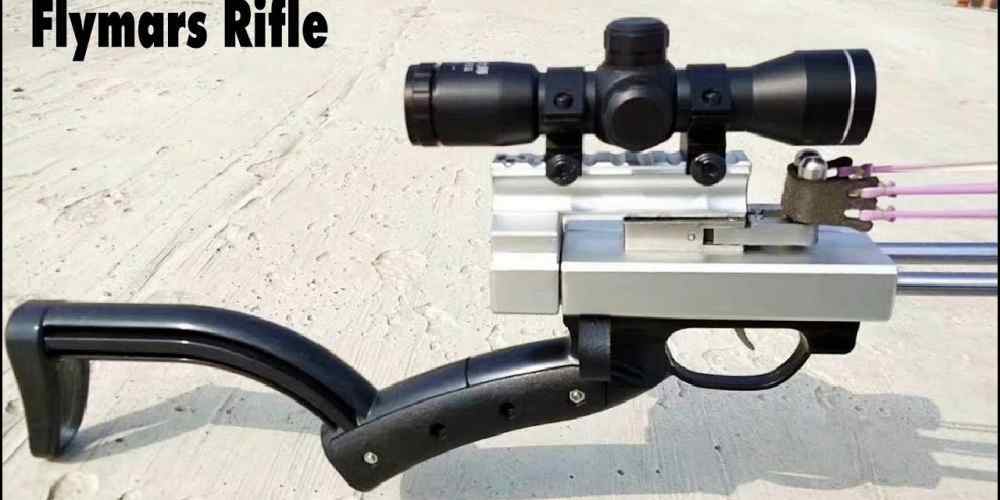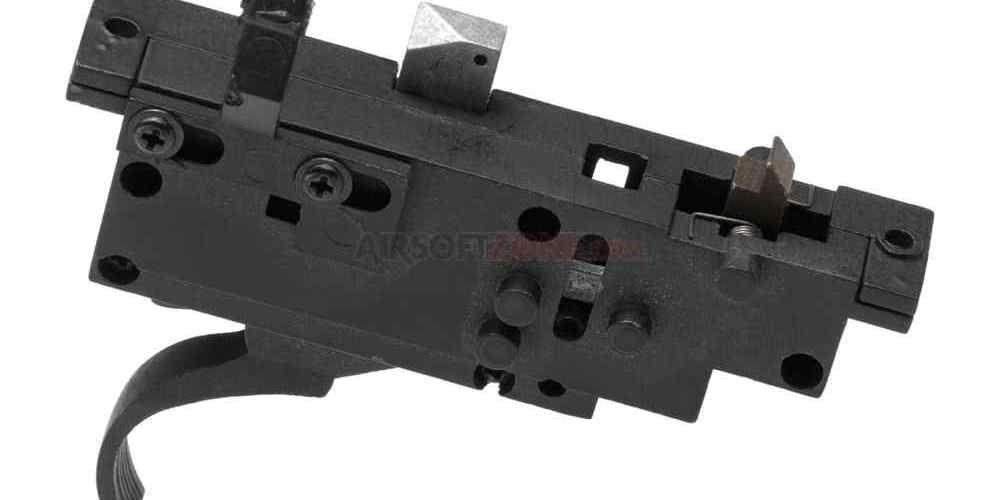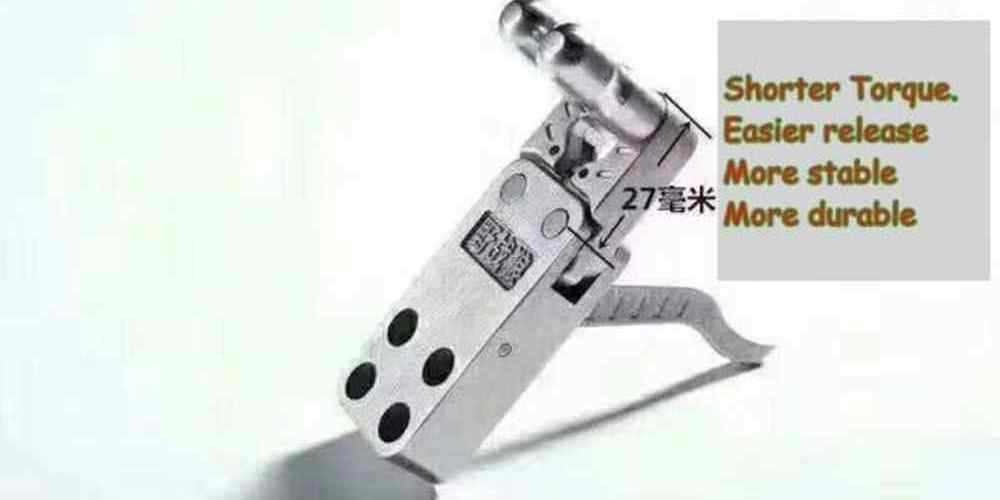“Eliminate trigger creep for precision shooting.”
Importance of Reducing Rifle Trigger Creep
When it comes to shooting accuracy, every detail matters. One crucial factor that can greatly impact your shooting performance is the trigger creep of your rifle. Trigger creep refers to the amount of movement the trigger has before it releases the firing pin. Excessive trigger creep can lead to inconsistent shots and decreased accuracy. That’s why reducing rifle trigger creep is essential for achieving sharper and more precise shots.
One of the main reasons why reducing trigger creep is important is because it allows for a more consistent trigger pull. When there is minimal creep, the trigger will break cleanly and predictably, resulting in more consistent shot placement. This is especially important for long-range shooting where even the slightest deviation can cause a miss. By reducing trigger creep, you can ensure that each shot is released in a controlled and consistent manner, leading to improved accuracy.
Another reason why reducing trigger creep is crucial is because it can help improve your shooting technique. When there is excessive creep, shooters may develop bad habits such as jerking the trigger or anticipating the shot. These habits can negatively impact your shooting performance and make it difficult to achieve tight groupings. By reducing trigger creep, you can focus on proper trigger control and develop a smoother and more precise shooting technique.
In addition to improving consistency and technique, reducing trigger creep can also enhance the overall shooting experience. A rifle with minimal creep will feel smoother and more responsive, making it more enjoyable to shoot. The crisp and clean break of the trigger can provide instant feedback to the shooter, allowing them to make quick adjustments and corrections. This can lead to a more satisfying shooting experience and ultimately improve your overall shooting skills.
There are several ways to reduce trigger creep in your rifle. One common method is to install an aftermarket trigger kit that is specifically designed to minimize creep. These kits typically include a new trigger assembly with adjustable settings that allow you to customize the trigger pull to your liking. By fine-tuning the trigger, you can achieve a crisp and clean break that is free of any unwanted creep.
Another way to reduce trigger creep is to regularly clean and lubricate the trigger mechanism. Dirt, debris, and lack of lubrication can cause the trigger to feel gritty and increase creep. By keeping the trigger mechanism clean and well-maintained, you can ensure that it operates smoothly and consistently. Regular maintenance can also help prolong the life of your rifle and prevent any potential malfunctions.
In conclusion, reducing rifle trigger creep is essential for achieving sharper shots and improving shooting performance. By minimizing creep, you can enhance consistency, technique, and overall shooting experience. Whether you choose to install an aftermarket trigger kit or simply maintain your rifle’s trigger mechanism, taking steps to reduce trigger creep can have a significant impact on your shooting accuracy. So next time you hit the range, remember to pay attention to your trigger and make sure it’s in top condition for sharper and more precise shots.
How to Adjust Trigger Creep on Your Rifle
Trigger creep is a common issue that many rifle owners face when trying to achieve precise and accurate shots. Trigger creep refers to the amount of movement the trigger has before the rifle actually fires. This can lead to inconsistent shots and frustration for the shooter. However, there are ways to reduce trigger creep and improve the overall performance of your rifle.

One of the first steps in reducing trigger creep is to understand how the trigger mechanism works. The trigger is connected to a sear, which holds the firing pin in place until the trigger is pulled. When the trigger is pulled, the sear releases the firing pin, causing the rifle to fire. Trigger creep occurs when there is excess movement in the trigger before the sear releases the firing pin.
To reduce trigger creep, you can adjust the trigger pull weight. This can be done by adjusting the tension on the trigger spring. By increasing the tension on the trigger spring, you can reduce the amount of movement the trigger has before the sear releases the firing pin. This will result in a crisper and more consistent trigger pull, leading to sharper shots.
Another way to reduce trigger creep is to polish the contact points between the trigger and the sear. Over time, these contact points can become rough or worn, leading to increased friction and trigger creep. By polishing these contact points, you can reduce friction and improve the overall performance of your trigger mechanism.
It is important to note that adjusting trigger creep should be done carefully and with caution. If you are not comfortable making these adjustments yourself, it is best to seek the help of a professional gunsmith. They will have the knowledge and experience to properly adjust your trigger mechanism and ensure that it is functioning correctly.
In addition to adjusting trigger creep, there are other factors that can affect the performance of your rifle. Proper maintenance and cleaning of your rifle can also help improve its accuracy and consistency. Make sure to regularly clean and lubricate your rifle to prevent any build-up of dirt or debris that could affect the trigger mechanism.
Practicing proper shooting techniques can also help improve your accuracy and reduce trigger creep. Make sure to maintain a steady grip on the rifle and focus on your breathing and trigger control. By practicing these techniques regularly, you can become a more skilled and accurate shooter.
In conclusion, reducing trigger creep is essential for achieving sharper shots and improving the overall performance of your rifle. By understanding how the trigger mechanism works and making the necessary adjustments, you can reduce trigger creep and achieve more consistent and accurate shots. Remember to always handle your rifle with care and seek the help of a professional gunsmith if you are unsure about making any adjustments. With practice and proper maintenance, you can become a more skilled and accurate shooter.
Benefits of a Crisp Trigger Break for Accuracy
When it comes to shooting accuracy, one of the key factors that can greatly impact your performance is the trigger break of your rifle. Trigger creep, or the amount of movement the trigger has before it releases the firing pin, can have a significant effect on your ability to make precise shots. A crisp trigger break, on the other hand, can help you achieve greater accuracy and consistency in your shooting.
Reducing trigger creep is essential for achieving a crisp trigger break. Trigger creep can cause your shots to be less predictable and can make it difficult to maintain a steady aim. By minimizing trigger creep, you can ensure that your shots break cleanly and without any unwanted movement.
One of the main benefits of a crisp trigger break is improved accuracy. When the trigger breaks cleanly and predictably, you can better control the timing of your shot and ensure that it goes off exactly when you want it to. This can help you achieve tighter shot groups and more consistent results, whether you are shooting targets at the range or hunting in the field.
In addition to improved accuracy, a crisp trigger break can also help you shoot faster and more efficiently. With a clean trigger break, you can quickly and confidently squeeze off shots without having to worry about any unwanted movement or hesitation. This can be especially important in high-pressure situations where split-second decisions can make all the difference.
Another benefit of reducing trigger creep is increased confidence in your shooting abilities. When you know that your trigger will break cleanly and predictably every time, you can shoot with greater confidence and focus on your aim and technique. This can help you stay calm and composed under pressure and make the most of every shot you take.
Reducing trigger creep can also help you avoid flinching or jerking the trigger, which can cause your shots to go off target. When the trigger breaks cleanly, you can focus on squeezing it smoothly and steadily, without any unnecessary movement or anticipation. This can help you maintain a steady aim and make more accurate shots, even in challenging shooting conditions.
Overall, reducing trigger creep for a crisp trigger break can have a significant impact on your shooting performance. By minimizing unwanted movement and ensuring that your shots break cleanly and predictably, you can achieve greater accuracy, consistency, and confidence in your shooting abilities. Whether you are a competitive shooter, a recreational hunter, or a casual target shooter, improving your trigger break can help you take your shooting to the next level. So take the time to fine-tune your trigger and enjoy sharper shots with every pull.
Common Causes of Trigger Creep in Rifles
Trigger creep is a common issue that many rifle owners face when trying to achieve precise and accurate shots. Trigger creep refers to the movement of the trigger before the rifle actually fires, which can lead to inconsistent and inaccurate shots. There are several common causes of trigger creep in rifles that can be addressed to improve the overall performance of your firearm.
One of the main causes of trigger creep in rifles is a dirty or worn trigger mechanism. Over time, dirt, debris, and grime can build up in the trigger mechanism, causing it to become sticky and less responsive. This can lead to a delay in the firing of the rifle, resulting in trigger creep. Regular cleaning and maintenance of your rifle’s trigger mechanism can help prevent this issue and ensure that your shots are more consistent and accurate.
Another common cause of trigger creep in rifles is a poorly adjusted trigger pull weight. The trigger pull weight refers to the amount of force required to pull the trigger and fire the rifle. If the trigger pull weight is set too low, it can lead to trigger creep as the trigger may not fully engage before the rifle fires. Adjusting the trigger pull weight to the manufacturer’s recommended specifications can help reduce trigger creep and improve the overall performance of your rifle.
In addition to a dirty trigger mechanism and improperly adjusted trigger pull weight, another common cause of trigger creep in rifles is worn or damaged trigger components. Over time, the components of the trigger mechanism can become worn or damaged, leading to increased friction and a decrease in overall performance. Replacing worn or damaged trigger components with high-quality, precision-made parts can help reduce trigger creep and ensure that your shots are more consistent and accurate.
It is important to note that trigger creep can also be caused by poor shooting technique. Improper finger placement on the trigger, jerking the trigger, or applying too much pressure can all contribute to trigger creep and result in inaccurate shots. Practicing proper shooting technique, including maintaining a consistent grip and applying smooth, even pressure on the trigger, can help reduce trigger creep and improve the overall accuracy of your shots.
In conclusion, trigger creep is a common issue that many rifle owners face when trying to achieve precise and accurate shots. By addressing common causes of trigger creep, such as a dirty trigger mechanism, improperly adjusted trigger pull weight, worn or damaged trigger components, and poor shooting technique, you can improve the overall performance of your rifle and achieve sharper shots. Regular cleaning and maintenance, proper adjustment of trigger pull weight, replacement of worn or damaged components, and practicing proper shooting technique are all important steps in reducing trigger creep and ensuring that your shots are more consistent and accurate.
Best Practices for Maintaining a Smooth Trigger Pull
When it comes to shooting accuracy, one of the most important factors to consider is the trigger pull. A smooth trigger pull can make all the difference between hitting your target dead center or missing completely. One common issue that many shooters face is trigger creep, which can greatly affect the precision of your shots. In this article, we will discuss what trigger creep is, why it happens, and how you can reduce it to achieve sharper shots.
Trigger creep is the movement of the trigger before it releases the firing pin. This movement can be felt as a slight resistance or dragging sensation when pulling the trigger. It can cause your shots to be less consistent and accurate, as the movement of the trigger can throw off your aim. Trigger creep is often caused by a poor trigger design or improper maintenance of the trigger mechanism.
To reduce trigger creep and achieve a smoother trigger pull, there are a few steps you can take. The first step is to ensure that your rifle is properly cleaned and lubricated. Dirt and debris can build up in the trigger mechanism over time, causing it to become sticky and less responsive. By regularly cleaning and lubricating your rifle, you can help reduce trigger creep and maintain a smooth trigger pull.
Another important factor to consider is the quality of your trigger. A high-quality trigger will have minimal creep and a crisp break, making it easier to achieve precise shots. If you find that your trigger has excessive creep, you may want to consider upgrading to a better quality trigger. There are many aftermarket triggers available that can help improve the performance of your rifle and reduce trigger creep.
In addition to cleaning and upgrading your trigger, there are also some techniques you can use to help reduce trigger creep. One technique is to apply consistent pressure to the trigger when pulling it. By maintaining a steady and even pressure, you can help minimize any movement in the trigger and achieve a smoother pull. Another technique is to practice dry firing your rifle. Dry firing can help you become more familiar with the feel of the trigger and improve your trigger control, which can help reduce creep.
It is also important to pay attention to your shooting technique when trying to reduce trigger creep. Proper grip and stance can help you maintain control over the rifle and minimize any movement in the trigger. By practicing good shooting fundamentals, you can help improve your accuracy and reduce the effects of trigger creep on your shots.
In conclusion, reducing trigger creep is essential for achieving sharper shots and improving your shooting accuracy. By cleaning and lubricating your rifle, upgrading to a high-quality trigger, and practicing good shooting techniques, you can help minimize trigger creep and achieve a smoother trigger pull. Remember to regularly maintain your rifle and practice proper shooting fundamentals to ensure that you are getting the most out of your trigger and achieving the best possible results on the range.




